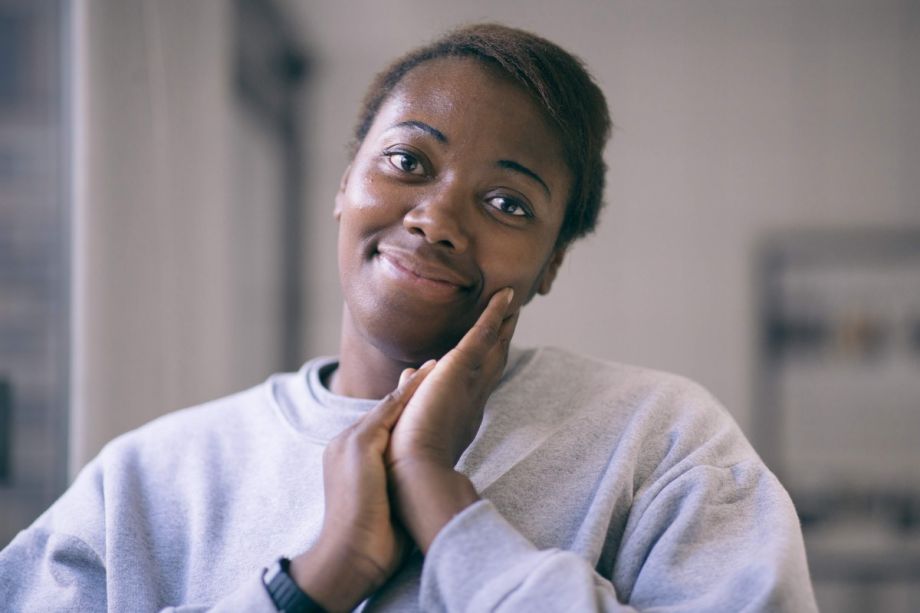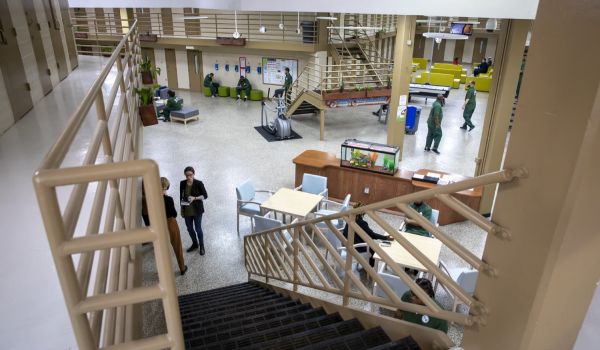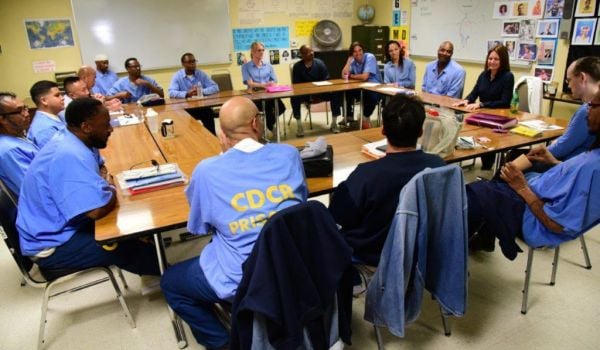In August, Maureen Onyelobi and Jeffery Young began classes with St. Paul’s Mitchell Hamline School of Law in pursuit of law degrees. Unlike most remote students, who might Zoom into their classes from home or a co-working space, they’re dialing in from two of Minnesota’s correctional facilities – Onyelobi from a women’s prison in Shakopee, Young from a men’s prison in Bayport.
Thanks to a five-year variance from the American Bar Association that allows the school to admit up to two fully-remote incarcerated students annually, Onyelobi and Young last month became the first students in the nation to attend an American Bar Association-approved law school from prison.
The milestone, years in the making, is the result of both changes that stemmed from the pandemic as well as a collaboration between the school and the Prison to Law Pipeline. The Prison to Law Pipeline is a project by All Square — a Minneapolis grilled cheese restaurant and social justice nonprofit that provides formerly incarcerated people with full-time employment, entrepreneurship classes, professional mentorship and optional therapy. And now, through its Legal Revolution initiative, the organization is working to transform the law through the people most impacted by it.

Jeffery Young is also one of the first two incarcerated law students in the U.S. (Photo by Emily Baxter / We Are All Criminals)
When the pandemic-driven shift to remote learning transformed the classrooms at Mitchell Hamline, it sparked new ideas at the school that’s been dedicated to expanding the law profession since its founding more than a century ago.
“We have a Reentry Clinic which is meant to help people who are leaving prison and going back into society with legal issues they might face while doing that. We’ve been doing this [equity-focused] work for a long time,” says Anthony Niedwiecki, the president and dean of the law school.
Through initiatives like this, the school was already in partnership with All Square’s Legal Revolution initiative. After the pandemic hit, ideas flourished. “When we were fully online, that’s when the idea came about — we wondered if we could open up the JD program to those who are currently incarcerated.”
In addition to the new reliance on remote learning brought by COVID, the murder of George Floyd was also a catalyst. “‘Jailhouse lawyers’ and legal expertise have always existed in prisons, so we wanted to formalize that,” says Maya Johnson, the director of the Prison to Law Pipeline program. “That, combined with… the execution of George Floyd in Minneapolis and the uprisings that followed created more of an appetite for progressive programming like this that seeks to have an impact in the legal community. All of those things combined into this perfect storm to create a window in time for a program like this.”
The Prison to Law Pipeline had already launched a paralegal program in partnership with North Hennepin Community College in Brooklyn Park, a Minneapolis suburb, in the fall of 2021 with five paralegal students. The paralegal endeavors served as “our pilot program to figure out how this works, how remote delivery of legal education works,” Johnson explains. That pilot led to a number of lessons to make the new JD program run more smoothly.
While the paralegal program is run differently than the JD program (the former is asynchronous while the latter is delivered through real-time classes on Zoom), what it highlighted was the need for support services for incarcerated learners. Such services include peer mentorship from others who were formerly incarcerated, professional mentorship from the legal community and tutoring. Because meeting those needs while the program was underway necessitated a slight scramble across the program’s network, these resources have been built in from the start of the JD program this fall. Johnson says that because of lingering and often shifting COVID restrictions, these supportive services are mostly offered through phone and email, but she hopes to deliver them in person someday.
There was one hurdle that was unique to the JD program, though: the Law School Admissions Test, or LSAT. While the American Bar Association, which accredits law schools in the U.S., is considering doing away with the requirement, the test is still a mandated part of entering law school.
While the pandemic also required the LSAT to be administered online, technological barriers kept the group from being able to administer the test inside the Minnesota prisons with which they were working. “I had served on an LSAT committee, so I got in touch with the people who do the LSAT test and asked if there was something else we could do with the test,” Niedwiecki says. The solution was to deliver the test on paper. So about a year and a half ago, Niedwiecki did so himself at the Shakopee and Bayport prisons.
The last administrative hurdle was figuring out how to deliver the classes synchronously since the real-time debate and discussion elements of law school are a critical element of the education. Both Niedwiecki and Johnson cite the collaborative and solutions-oriented approach of Paul Schnell, the commissioner of the Minnesota Department of Corrections, as a critical factor in the program’s success. The prisons worked with Mitchell Hamline to find space where Zoom classes could be delivered undisrupted while still being staffed with a guard.
For Niedwiecki and Johnson, the benefits of such a program more than outweigh the effort to get it going.
“These are the people most impacted by the criminal justice system. Why not give them the tools to be able to take some control over their own lives?” Niedwiecki asks. “We want to give people skills, because they’re going to leave prison eventually, to become productive citizens.”
Non-incarcerated students at Mitchell Hamline will benefit as well, Johnson adds.
“As a newer attorney myself… you can read about a criminal statute or criminal theory about why we punish people in a textbook, but to have somebody in your classroom who can speak to what the true impact is, whether it’s the intended impact or not, is so invaluable,” she says. “There will be people who might not see the value in it, and that’s ok. The goal is not to make people want to start programs like ours, but really just to maybe open their minds a little and not operate in a system where we put people behind closed doors and forget about them.”

Cinnamon Janzer is a freelance journalist based in Minneapolis. Her work has appeared in National Geographic, U.S. News & World Report, Rewire.news, and more. She holds an MA in Social Design, with a specialization in intervention design, from the Maryland Institute College of Art and a BA in Cultural Anthropology and Fine Art from the University of Minnesota, Twin Cities.
Follow Cinnamon .(JavaScript must be enabled to view this email address)
















